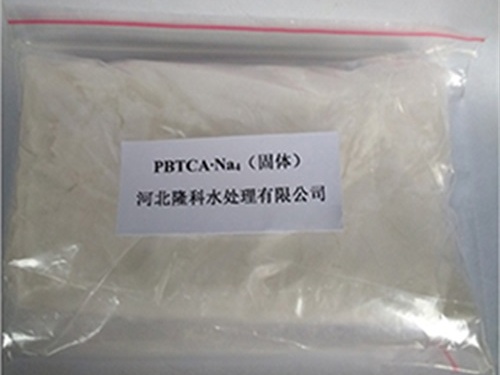Understanding Zinc HEDP and Its Applications in Various Industries
Zinc HEDP An Overview of Its Properties and Applications
Zinc Hydroxyethylidene Diphosphonate (Zn-HEDP) is a widely utilized chemical compound that serves numerous roles across various industries. As a derivative of Hydroxyethylidene Diphosphonic Acid (HEDP), Zn-HEDP exhibits unique properties that make it valuable in several applications, particularly in water treatment, pharmaceuticals, and agriculture. This article explores the characteristics, advantages, and uses of Zn-HEDP in detail.
Chemical Structure and Properties
Zn-HEDP is synthesized through the complexation of zinc ions with HEDP. The resulting compound features a unique structure that allows it to interact effectively with metal ions, thereby enhancing its functionality. The compound is characterized by high stability and solubility in water, which are essential for its effectiveness in various applications.
One of the key properties of Zn-HEDP is its ability to act as a chelating agent. This means it can bind to metal ions, preventing them from forming insoluble precipitates. This property is particularly important in water treatment processes, where metal ions can cause scale formation, leading to operational inefficiencies. By sequestering these ions, Zn-HEDP helps maintain the efficiency of equipment and prolong lifespans, making it a cost-effective solution for industries reliant on water systems.
Applications in Water Treatment
In the water treatment industry, Zn-HEDP is commonly used as a scale inhibitor and corrosion inhibitor. Water systems that circulate in industries such as cooling towers, boilers, and reverse osmosis systems are prone to scaling and corrosion due to the presence of calcium, magnesium, and other metal ions. Zn-HEDP helps mitigate these issues, ensuring smooth operation and reducing maintenance costs.
The chelation property of Zn-HEDP allows it to effectively isolate metal ions that would otherwise contribute to scaling. By forming stable complexes with these ions, Zn-HEDP prevents their deposition on surfaces, thereby promoting the integrity and efficiency of water systems. Additionally, this functionality supports regulatory compliance concerning water quality and safety standards.
Role in Agriculture
'zn hedp 锌hedp'

Zn-HEDP also plays a significant role in agriculture, particularly in plant nutrition and protection. Zinc is an essential micronutrient that supports various physiological processes in plants, including enzyme function and photosynthesis. However, zinc availability in soil often fluctuates, leading to deficiencies that can hinder plant growth.
Zn-HEDP, when used as a fertilizer additive, enhances the bioavailability of zinc to plants. Its chelating ability ensures that zinc remains in a soluble form, making it accessible to roots. This not only promotes healthy plant growth but also improves crop yields. Furthermore, the application of Zn-HEDP in agricultural practices contributes to sustainable farming, as it reduces the need for excessive zinc applications that can lead to soil toxicity.
Pharmaceutical Applications
In the pharmaceutical sector, Zn-HEDP is recognized for its potential use as a drug delivery agent and in bone health formulations. Zinc is known to support bone mineralization and metabolic processes, making Zn-HEDP a valuable additive in the formulation of bone health supplements. Its chelating properties may also enhance the efficacy of certain medications, allowing for targeted delivery within the body.
Environmental Impact and Safety
One of the appealing aspects of Zn-HEDP is its relatively low environmental impact compared to other chemical compounds used in similar applications. The compound is biodegradable and does not accumulate in the environment, which aligns with the growing demand for sustainable and environmentally friendly products. However, like any chemical, it should be handled with care, following appropriate safety guidelines to prevent any potential hazards.
Conclusion
Zinc HEDP represents a multifunctional compound with diverse applications that span across water treatment, agriculture, and pharmaceuticals. Its properties as a chelating agent, coupled with its effectiveness in mitigating scaling and enhancing nutrient availability, make it a valuable addition to various industrial and agricultural practices. As industries continue to seek sustainable and efficient solutions, Zn-HEDP is poised to play an increasingly significant role in achieving these objectives, promoting both economic benefits and environmental stewardship.
-
Premium Isothiazolinones | Broad-Spectrum Biocidal SolutionsNewsAug.28,2025
-
LK-319 Special Scale And Corrosion Inhibitor For Steel Plants: Advanced Solutions for Industrial Water SystemsNewsAug.22,2025
-
Flocculant Water Treatment: Essential Chemical Solutions for Purification ProcessesNewsAug.22,2025
-
Isothiazolinones: Versatile Microbial Control Agents for Industrial and Consumer ApplicationsNewsAug.22,2025
-
Scale Inhibitor: Key Solutions for Water System Scale PreventionNewsAug.22,2025
-
Organophosphonates: Versatile Scale Inhibitors for Industrial Water SystemsNewsAug.22,2025





